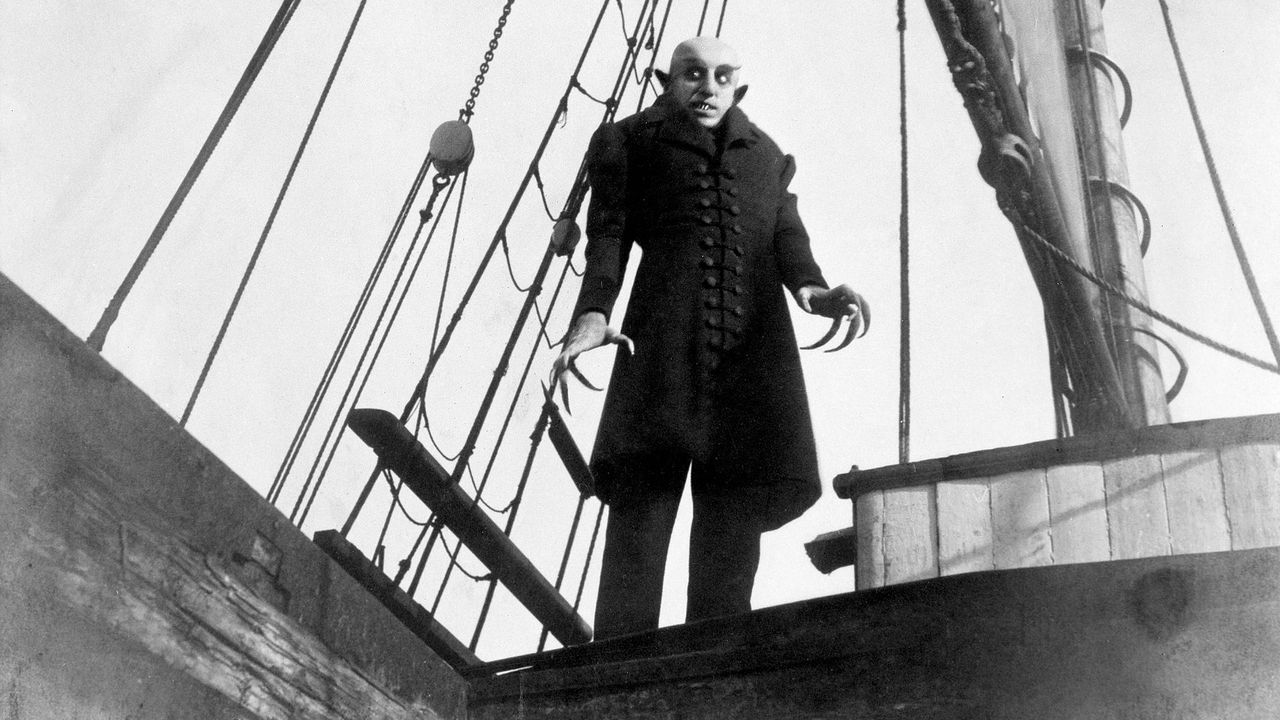Nosferatu: A Gay Symphony of Yawns
I don't really consider myself a film bro or esteemed movie critic, but it looks like this semester, I'm going to have to tap into my inner Wade and watch a literal ton of movies, since I'm taking two film classes during the spring. The first movie I watched for class so far has been the original Nosferatu (1922) for my queer horror film genre class. I figured it was a fitting movie to start watching since there was just recently an adaptation of Nosferatu that came out last year, and while I'm unsure on how likely I am to watch the modern version, I was forced to watch the original on a Sunday night, since I had left it until the very last minute before discussing it in class on Monday.
So! To give a brief summary of the movie for those unfamiliar with the story: Thomas Hutter is sent to Transylvania by his real estate agent boss in order to help a new client, Count Orlok, buy a house in Germany. However, upon arriving at Orlok's estate, Thomas realizes that Orlok is a pretty weird and creepy guy, which unsettles him deeply. In one instance, Thomas cuts his thumb and Orlok rushes to his side, trying to suck the blood from his thumb, which repulses Thomas and yanks his hand away. In the morning, Thomas finds two puncture marks on his neck, which he blames on mosquitoes, but is pretty obviously Orlok's handiwork as a vampire.
Orlok creeps on Thomas during the night a few times, slowly shambling over to him, but is somehow stopped by a vision that Thomas' wife, Ellen, has back in Germany, saving her husband from Orlok. The next morning, Thomas sees Orlok loading up a bunch of coffins on a carriage and watches as Orlok gets in one himself, just as all of the coffins are transported elsewhere. The coffins are then placed on a boat, where it is revealed that rats were inside of the coffins, which kills the entire crew because of illnesses.
To wrap up the movie, Ellen reads a book about vampires that basically tells her that to defeat Orlok, she must sacrifice herself and trick him into staying in the sun, which kills him. Thomas arrives just after Ellen's plan succeeds, which leaves him free of Orlok, but mourning the loss of his wife.
Personally, I wasn't particularly engaged with this movie as I watched it. Maybe I'm stupid, or maybe the film is too vague about its story, but during my viewing of the movie the only thing that kept me watching the movie was the fact that I had to watch it for my class. Even my resident film enjoyer Wade, who I was watching it with, seemed pretty bored by the film and we'd try to joke and talk over the movie to keep ourselves entertained. I can still recognize the technique being used, like tinting the film blue to convey nighttime scenes in sepia tone, so I think it's still a technically impressive movie with a lot to be proud of.
Inevitably, I now have to talk a little bit about the homosexual themes of Nosferatu. Initially I didn't really get any overt queer imagery, as it felt like a pretty normal vampire story, but once I peeled away the supernatural layers of the film, I got a better understanding for the core story it's telling. Ignoring all of the vampire stuff, Nosferatu is a film about a wife's worry that her husband will be unfaithful during his travels, and an encounter with a strange, aggressive man. Given Orlok's hunger for blood and obsession with Thomas, I guess you could draw gay conclusions from that relationship, but what really nailed it for me with the oral fixation the film hammers into the audience. For example, Orlok sucks Thomas' thumb (a phallic symbol) for his blood, or he bites his neck (a similarly erotic action) in order to extract the blood he feeds on. Through this erotic, intimate imagery with phallic symbols and a repeated "sucking" motif, you can draw the conclusion that Orlok can represent a homosexual man.
When viewing the rest of the film under the lens of Count Orlok being gay, or at least representing queerness, a few more comparisons fall into place. For example, like I mentioned earlier, Orlok boards a ship and brings disease-bearing rats with him, which kills the crew of the ship and eventually spreads the illness to the German town he arrives at. The obvious parallel to see here would be the AIDS disease being spread by a homosexual, although interestingly, this is an instance of our own understanding of history tainting the original intent of the film, since the AIDS crisis hadn't happened yet at the time of the film's production. So does this mean that the queer reading of the film is bullshit? Does stretching a few plot points of the movie to match up with metaphors really make a film gay?
Originally, my answer was No, making broad connections to queerness in a film doesn't make it a "queer film". After all, you could make stretching connections to queerness in any movie, if you really wanted to. If I interpreted Star Wars' themes of rebellion and resistance against the Dark Side as representing the gay man's resistance to submit to heteronormativity and "staying in the closet," would that make Star Wars a queer film? Probably not.
The blog post doesn't end there, however. After a little bit of research, it turns out that the director for Nosferatu, F.W. Mumau, was in fact a gay man! So, maybe Count Orlok being a representation of a gay man's lust for sex isn't as far-fetched as it may seem... At the end of the day, I think movies can be interpreted however the viewer wants. Anyone can be gay, anyone can be straight, it just depends on the individual watching the movie and what feelings they project onto the characters.
Gay or not, though, the movie was still pretty boring.






Comments
Post a Comment